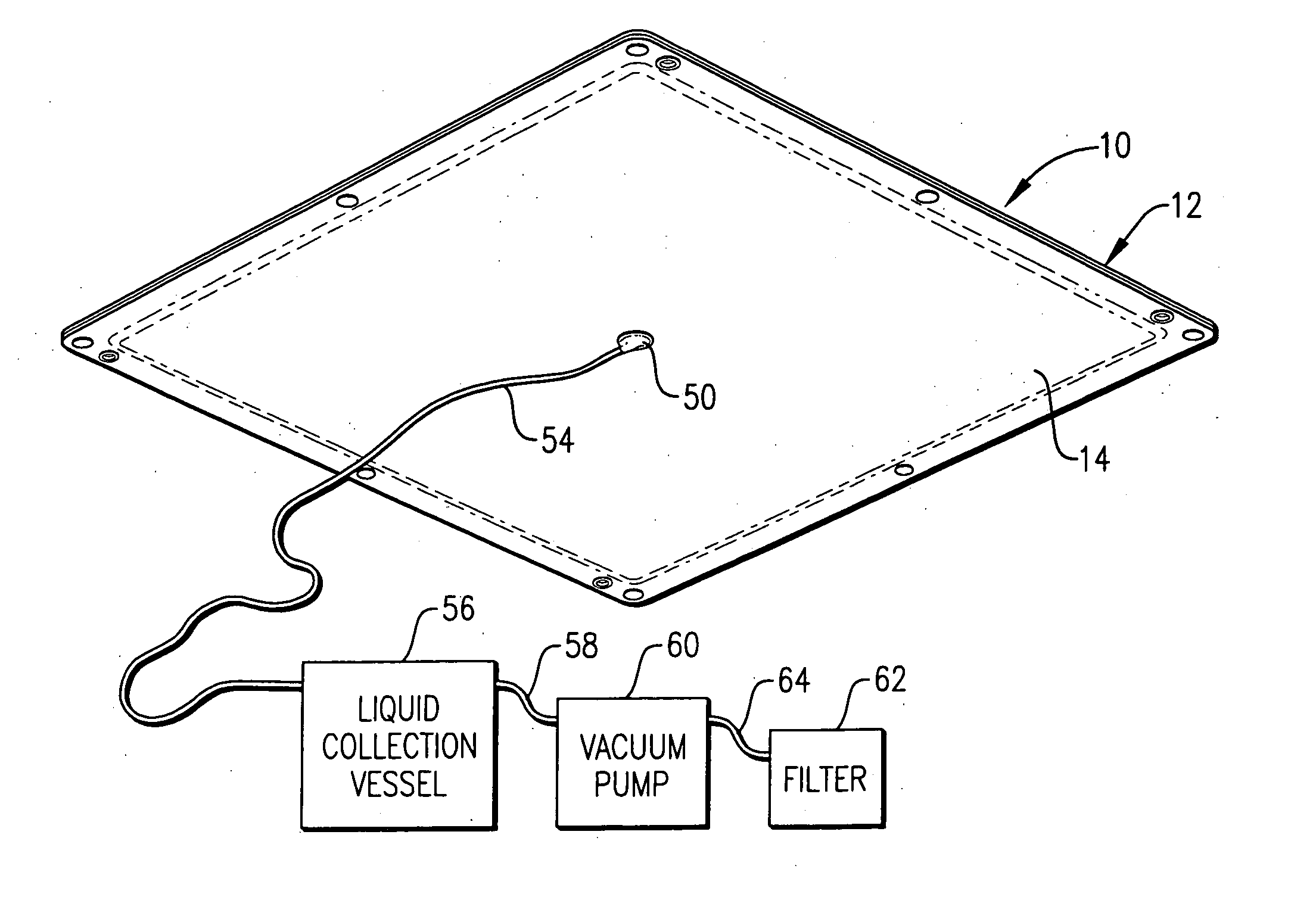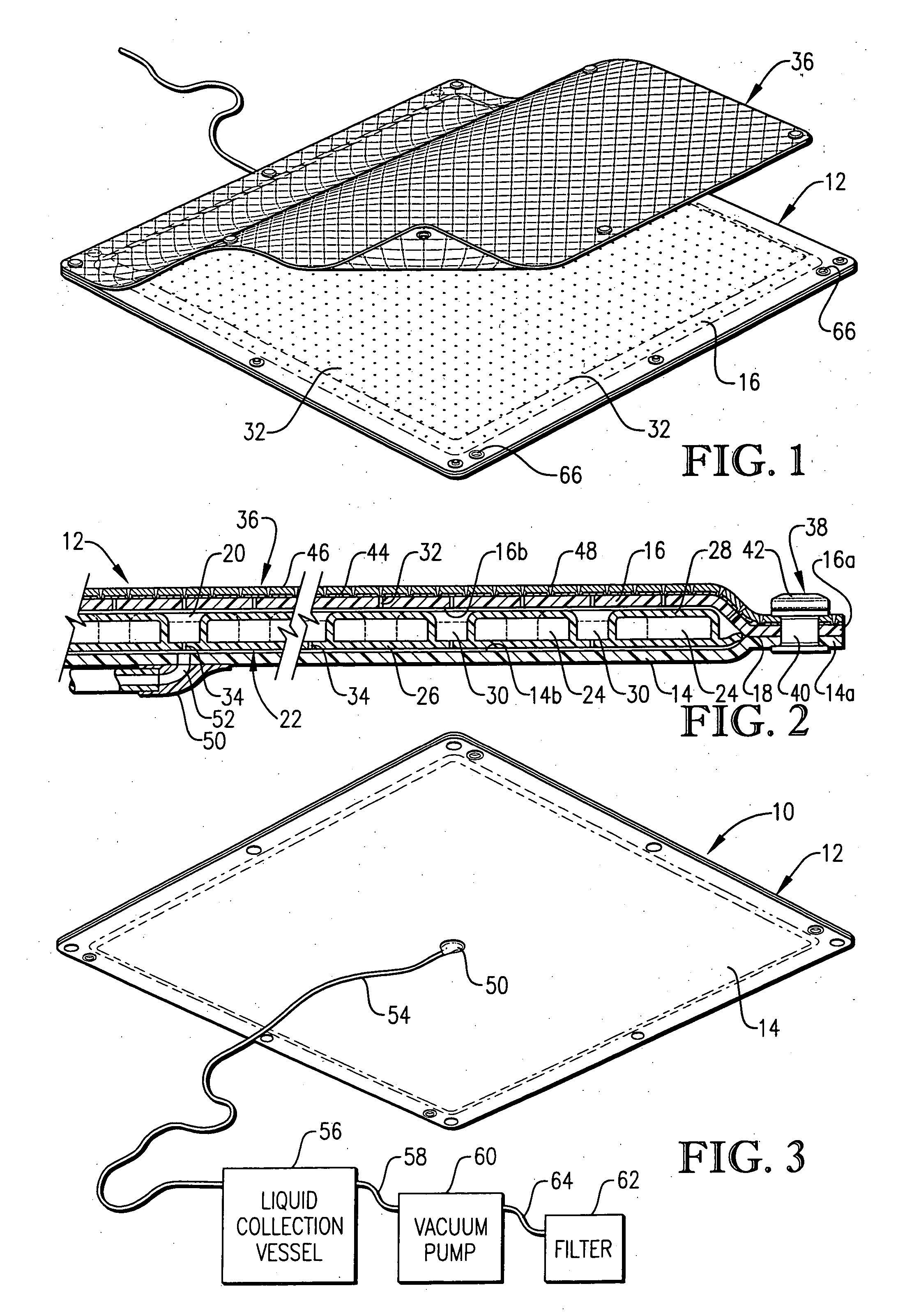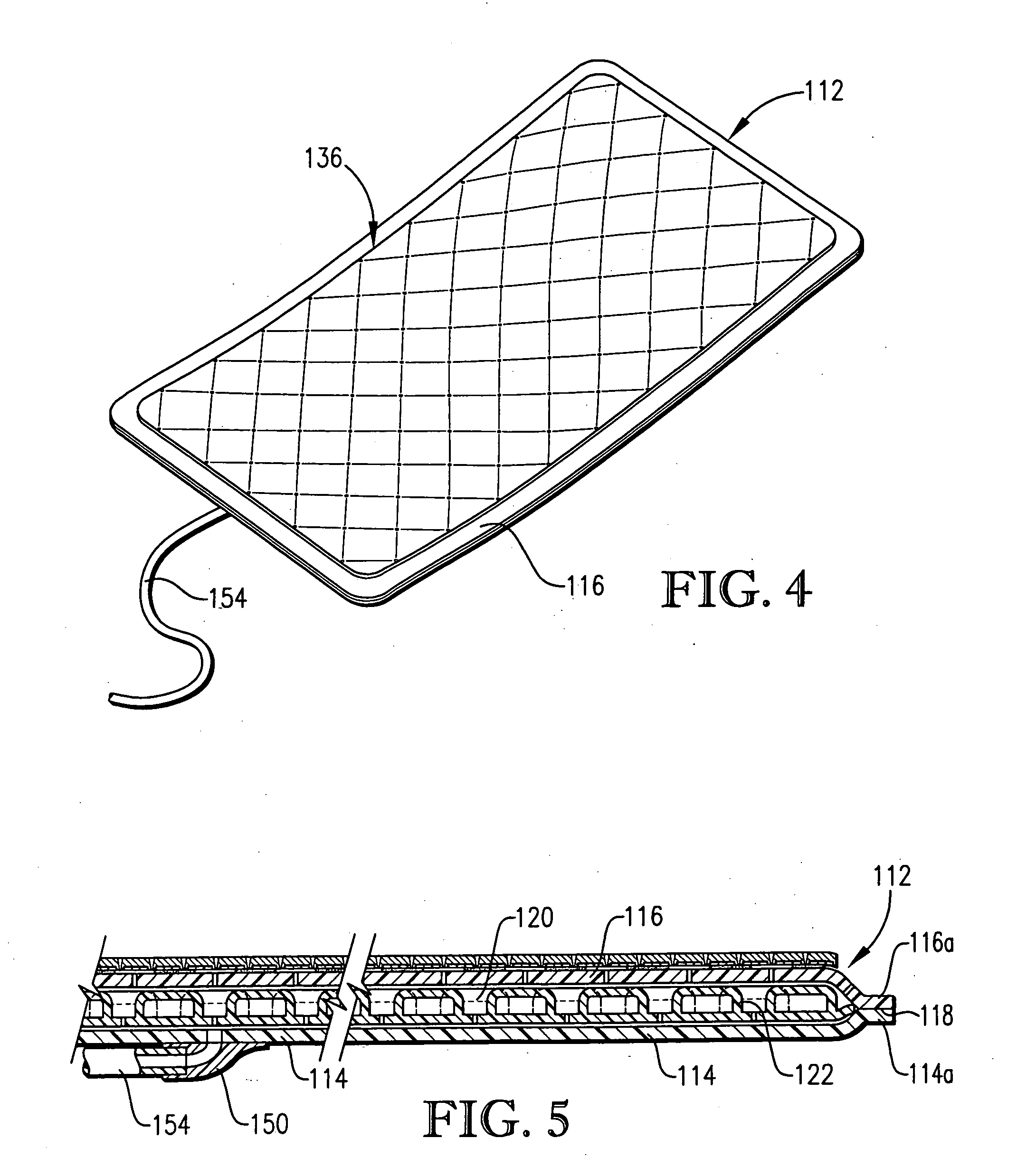Fluid collection and aspiration unit for management of urinary incontinence
a technology for urinary incontinence and aspiration, which is applied in the field of thin layer aspiration or perfusion units, can solve the problems of odor problem, pad soon becomes soaked, and the management of excretions of incontinent patients is ongoing and largely unsolved problems, and achieves the effect of quick and easy removal from the interior spa
- Summary
- Abstract
- Description
- Claims
- Application Information
AI Technical Summary
Benefits of technology
Problems solved by technology
Method used
Image
Examples
Embodiment Construction
[0030] The pad 112 illustrated in FIGS. 4 and 5 of the drawings is of construction similar to pad 12 except for its overall size and the manner of attachment of the porous sheet member 136 to the permeable layer 116 of pad 112. In order to permit wearing of pad 112 by an ambulatory patient under his or her undergarment, pad 112 is preferably of a size having overall dimensions of about 10 in.×5 in. The porous sheet member 136, which is also preferably Dry-Weave® material may be removably affixed to the outermost face of permeable layer 116 by use of double-stick tape located around the perimeter of the porous sheet member 136, and at least at the corners of the sheet member 136. Although not shown in FIG. 4, it is to be understood that pad 112 is adapted to be connected to a collection vessel and vacuum pump similar to vessel 56 and pump 60, except for relative sizes, through the medium of a conduit 154, which is again connected to the central portion of liquid impermeable layer 114...
PUM
 Login to View More
Login to View More Abstract
Description
Claims
Application Information
 Login to View More
Login to View More - R&D
- Intellectual Property
- Life Sciences
- Materials
- Tech Scout
- Unparalleled Data Quality
- Higher Quality Content
- 60% Fewer Hallucinations
Browse by: Latest US Patents, China's latest patents, Technical Efficacy Thesaurus, Application Domain, Technology Topic, Popular Technical Reports.
© 2025 PatSnap. All rights reserved.Legal|Privacy policy|Modern Slavery Act Transparency Statement|Sitemap|About US| Contact US: help@patsnap.com



